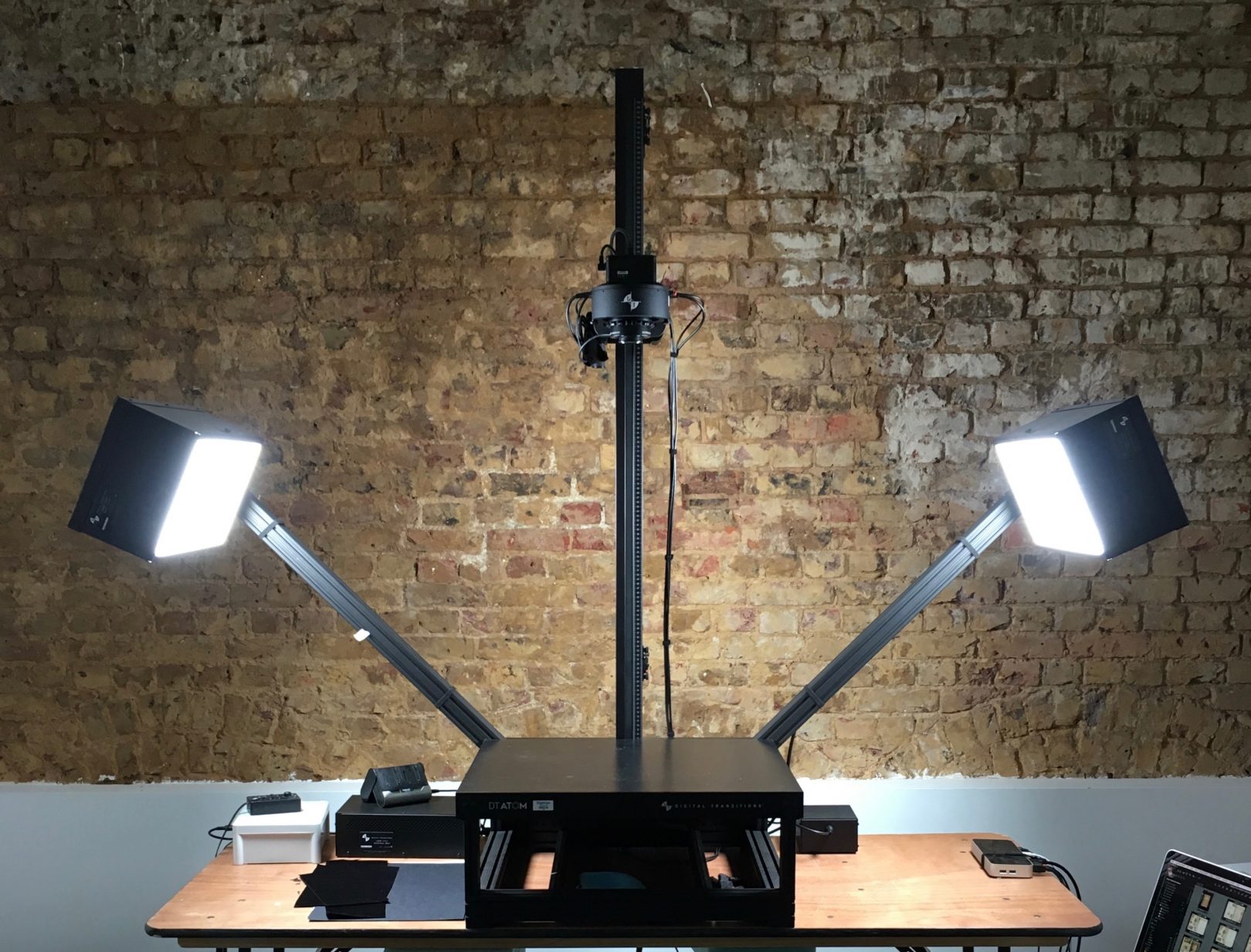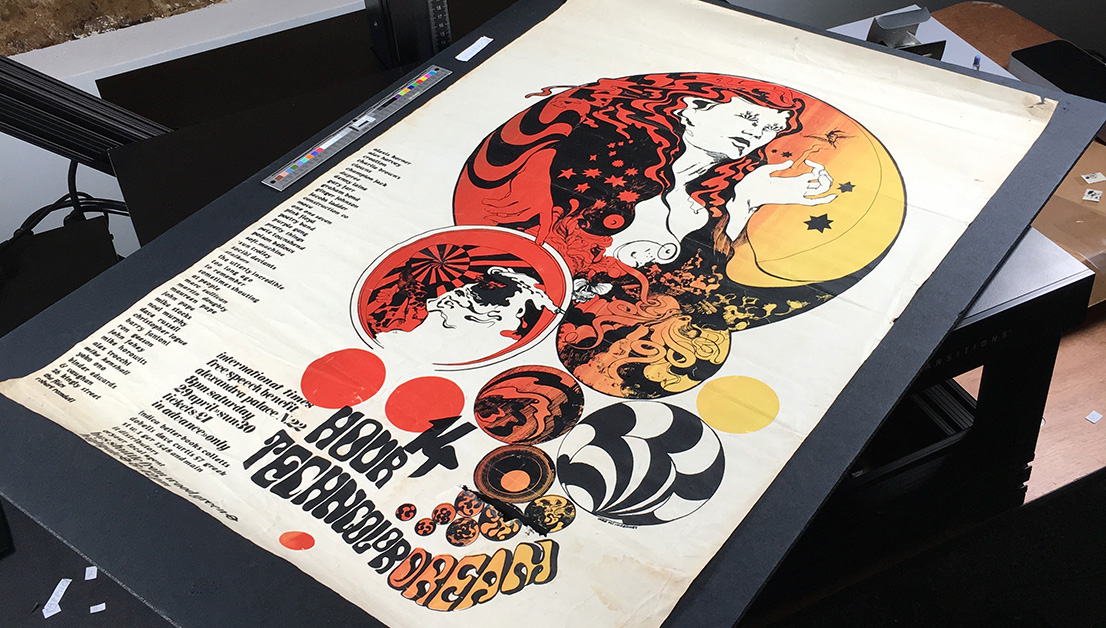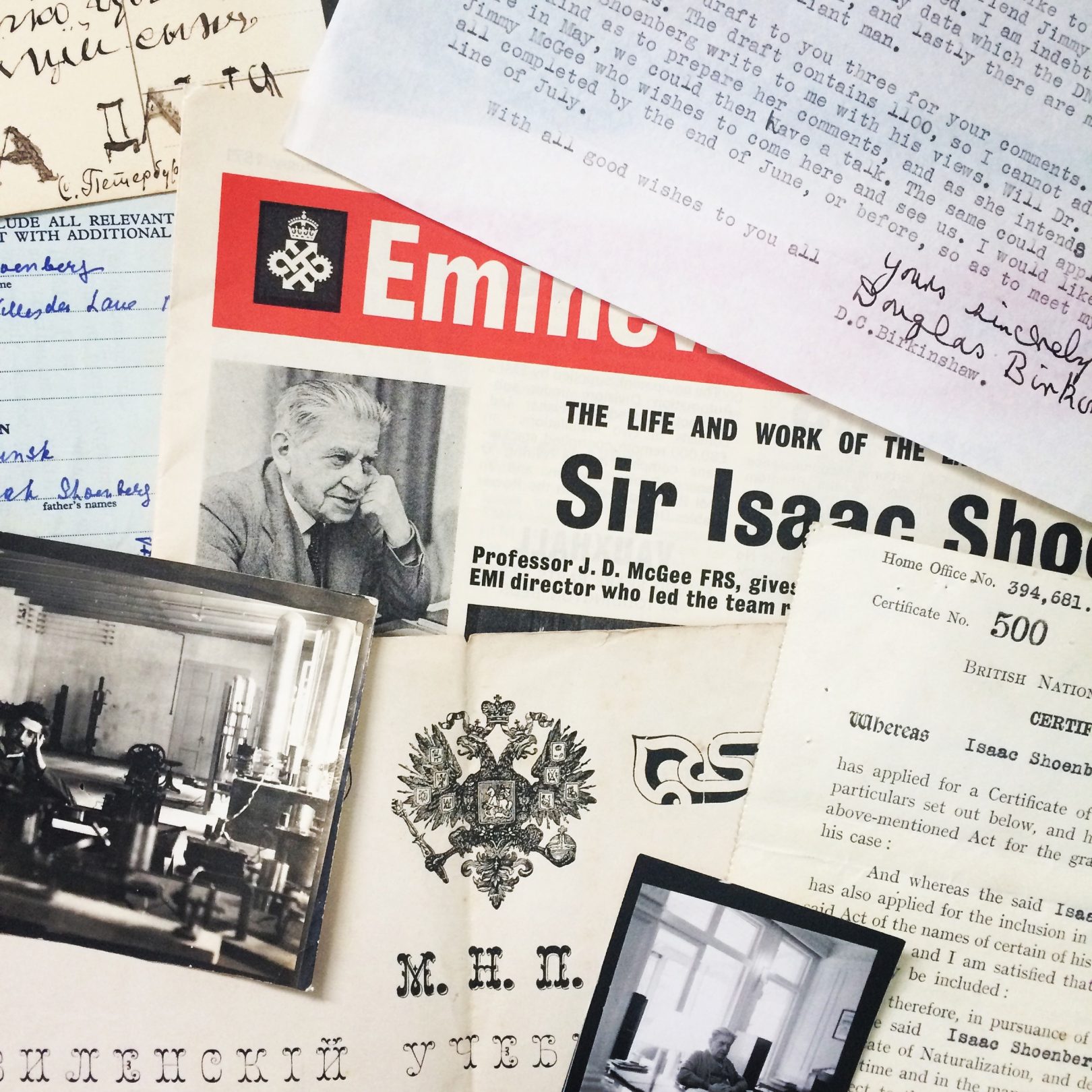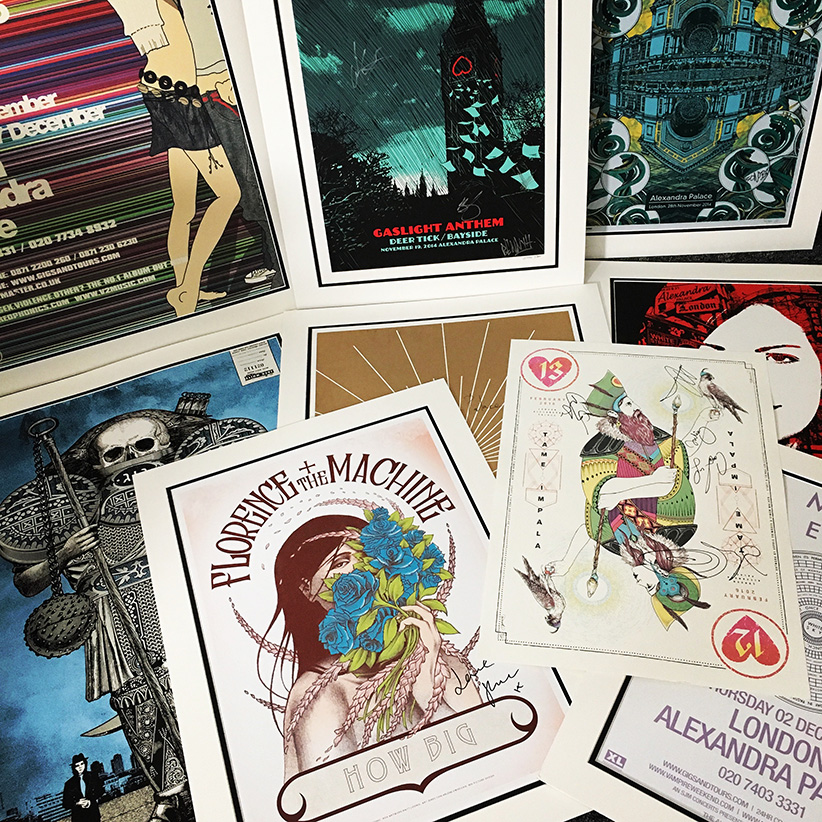Alexandra Palace is home to world changing innovation and spectacular entertainment. In order to celebrate and uncover this legacy we partnered with Google Arts & Culture. Launching the first phase of our online archive on the 80th anniversary of television on 2nd November 2016.
Google undertook the daunting process of digitising our archive. We brought together collections from local archives, from private individuals, societies and our own recently rediscovered archive, creating over 8,000 scans. The collections date from 1859 to 2017, covering photographs, prints, posters, plans, maps, documents, paintings, postcards, tickets, medals and ephemera documenting the history of the site and the creators and innovators that built our rich history. By digitising these materials we can protect the original documents, whilst providing access to as many people as possible.

Google installed specialist scanning equipment that allowed us to scan delicate materials without putting pressure on the often sensitive and fragile surface. The camera head allowed us to get close in on details to produce the highest quality image possible. Smaller items we recorded at over 1000 dpi, whilst larger items, such as our posters and plans we scanned in sections, later stitching these together to form huge zoomable images to discover the smallest details.
Photography and capture was performed by the exceptional Anna Arca, who brought a wealth of experience from her work with the National Gallery and Yorkshire Sculpture Park. Each item was scanned with a colour and focus chart to ensure the clearest resolution, and balanced to ensure true fidelity in the original.

We released an initial batch of 500 items on the Google Arts & Culture platform last November and will doubling that amount this September. All are available with metadata, allowing the collections to be searched, and information revealing what they tell us about Alexandra Palace history. With a history as wide as Alexandra Palace there is always more to be identified and uncovered.
By partnering with Google we were able to scan many more items than we had initially considered possible. We digitised complete guidebooks and full runs of programmes recording events and performances from 1875 to the 1930s. We were also able to bring in important and unseen private collections, including papers from the family of Sir Isaac Shoenberg, one of the pioneers of television; and the family of original puppeteers Jan Bussell and Ann Hogarth allowed us access to the Muffin the Mule archive.

Sir Isaac Shoenberg
Alexandra Palace still performs it original purpose of bringing spectacular entertainment to the masses, and our archive is not merely a collection of historic papers. We were pleased to be able to digitise our collection of gig posters, from the psychedelic 14 Hour Technicolor Dream in 1967 we borrowed in, to our own modern collection with Florence and the Machine, Panic! At the Disco and The Last Shadow Puppets.

We will continue to release this archive on Google Arts & Culture, with more online exhibitions. Our partnership with Google has created two virtual reality tours on Google Expeditions and is helping to bring our legacy of innovation to life, through the latest steps in innovation.





